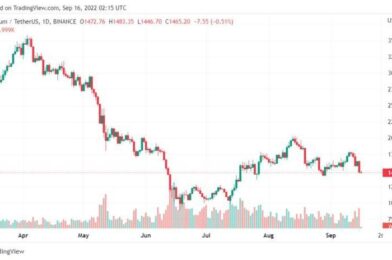When it comes to the cryptocurrency market, it seems that there are no accurate predictions. We know very little about a new kind of money. Bitcoin, the first cryptocurrency, was released in 2009, just 11 years ago, and now we have a multi-billion dollar crypto market that appeared almost out of nowhere. Therefore, experts can predict the price of Bitcoin in 2025 which ranges from $1,000,000 to 0.0000001, and every prediction has a chance of being fulfilled.
Of course, cryptocurrency trading is not limited to Bitcoin: Ethereum, Monero, Litecoin and other currencies account for almost half of the market. However, bitcoin reigns supreme in the crypto world. Bitcoin is trending due to the zero risk of inflation, and its compound annual growth rate (CAGR) is expected to be 3% between 2019 and 2024. As a result, any analysis and forecasts from the Bitcoin perspective must take into account.
The cryptocurrency market operates on the same principles as other financial markets. Japanese candles and other indicators, according to technical analysts, can be seen on the charts. Simply put, many market indicators reflect human behavior rather than the true cost of the stock. An experienced analyst can track and identify patterns of movement themselves, as well as create graphs of future changes.
Factors affecting the cryptocurrency industry
Regardless of their relative importance, each of them is important. Moreover, each of these factors has the potential to derail future expectations. As a result, it is necessary to follow them in order to have a better understanding of the market. We have identified several major cryptocurrency industry trends.
Store Information
The cryptocurrency market is not affected by the major economic and political news that affects the forex and stock markets. The US unemployment rate, the US-China trade war, and the new European Central Bank interest rate could all cause chaos in currencies and securities. On the other hand, the specific set of news related to cryptocurrencies is the main factor of influence and driving force of market fluctuations.
The crypto market is focused on new government regulations and other government moves. Moreover, this market is sensitive to updates – the successful launch of new platforms, price updates, movements of major players, etc.
Expert opinions
The pool of crypto experts is diverse. On the other hand, the cryptocurrency market values technical experts, owners of large startups, major investors in the market, and others. On the other hand, the crypto market is full of social climbers – YouTube bloggers, news writers, self-promoting traders and other loud voices.
As a result, distinguishing between a true expert’s opinion and a forgery is a difficult task. As a result, expert opinions have an impact on the market, but the reaction is also short-lived. When market participants realize that they are dealing with a fraud, they stop the transaction and start waiting for the real news.
Rumors about cryptocurrency
The main difference between news and rumors is the ability to verify information. Real-life events, trends, economic indicators and other searchable data are used to generate market news. At the same time, rumors are based on opinions and quotes. However, thousands of investors are buying and selling cryptocurrencies based on rumors. These transactions cause price changes.
When the cryptocurrency market was at its peak in 2017, even minor news could cause prices to fluctuate. However, the cryptocurrency market will be calmer in 2020. For example, the “breaking news” that Elon Musk intends to invest $1 million in Bitcoin is unlikely to impress investors. However, rumors are a way to manipulate the market, so the cryptocurrency market is not immune to it.
Technology updates
Cryptocurrencies are based on blockchain systems and were probably the first high-tech payment method. However, technologies do not exist in a vacuum: they evolve and change all the time. Significant technological changes can be detrimental to the cryptocurrency market, but they usually do not happen suddenly, giving the market enough time to adapt.
For example, the crypto world is waiting for the new Bitcoin halving in 2020. Bitcoin halving is the process of dividing the number of rewards generated per block in order to keep the total supply of Bitcoin below 21 million. The previous halving drew attention to Bitcoin and raised its price. There is no reason to wait until next year for another scenario.
gold cost
Gold is widely considered one of the leading active reserve assets in the financial markets. When the value of fiat currencies fall, financial investors turn to reserves such as gold, silver, and commodities. Cryptocurrencies are also an alternative investment option in times of economic turmoil. The increased demand for the metal is driving up the price of gold, and investors are starting to buy bitcoin.
And due to the Corona virus pandemic, the price of gold reached new heights in 2020. China is the largest exporter of gold in the world, and production there stopped after several weeks of quarantine. Due to the limited production of the metal, the price of gold rose and the demand for Bitcoin increased dramatically. However, another economic downturn could frustrate investors and drive them away from the volatile cryptocurrency market.
Trends in Cryptocurrencies 2020-2023
Keeping in mind the key impact factors, any crypto player should also follow the major crypto trends 2020-2023. Of course, everything can change very quickly: no one expected the coronavirus pandemic and the global quarantine at the beginning of 2020, not to mention the economic crisis in the world’s leading economies. We created the forecast based on the current market situation and hope that major crypto trends will continue indefinitely.
COVID and Bitcoin: Halving for 2020
As mentioned earlier, the previous halving of 21 million bitcoins has intrigued investors. The reason is straightforward: the scarcity of new bitcoin supply is driving up the price. Moreover, as the price increases, Bitmain becomes more profitable, mining increases, and the end of Bitmain is approaching. When mining farms, mostly in China, go out of business, Bitcoin faces a serious challenge. However, he regained his position after the turmoil. So at least Bitcoin will stay on top in 2020: we don’t expect another crypto winter.
Moreover, Bitcoin is benefiting from the pandemic. During periods of financial market volatility, investors turn to reserve assets such as metals, commodities, and cryptocurrencies. Moreover, in a post-pandemic world, dissatisfaction with the traditional economy and fiat currencies will drive new entrants into the cryptocurrency world. Bitcoin, as the oldest and most reliable currency, will continue to lead and set major cryptocurrency trends.
One interesting fact: Tom Lee, a former analyst at JP Morgan, believes that the fair price of bitcoin is $14,800, but could rise to $150,000 if the number of bitcoin wallets reaches 7% of the number of Visa cards (for now)4 5 billion). Anyway, Bitcoin’s forecast for 2020-2023 is rather optimistic.
Follow the leader in Altcoins
Ethereum
Ethereum is the undisputed leader among altcoins. Nasdaq has added Ethereum and Bitcoin to its list of indices. Its dominant position stems from the fact that Ethereum is not only a cryptocurrency but also a platform for many blockchain projects. However, Ethereum faced scalability issues. The platform has been unable to process remittances as the number of Ethereum-based projects increases. The world is still waiting for Ethereum-based enterprise applications. If a company like Uber launches blockchain apps that accept cryptocurrency payments, Ethereum will be around for a long time. Otherwise, it may end up being a dead coin. Expectations are moderate.
ripple
The phenomenon of Ripple is that there is no single opinion about its nature: some market analysts do not believe that it is a cryptocurrency due to the lack of mining. However, Ripple has formed a partnership with 50 major banks and financial institutions. Banks usually oppose cryptocurrency trends, but not Ripple. The primary challenge for this coin is to take Swift out of the market. If this occurs, the outlook can be changed from moderate to positive.
EOS
EOS is a rising star in recent years and the main competitor to Ethereum. This platform can support enterprise applications without causing scalability issues. As a result, if Ethereum fails the challenge, EOS could take its place. At the moment, the forecast is favorable.
Monero
Monero remains at the top of the list of the most popular cryptocurrencies. It is widely considered the most secure cryptocurrency. However, it may lose its position. Apparently 90% of transactions can be traced. Even after the latter, the percentage of safe transactions is less than 50%. Expectations range from moderate to low.
Looking into the future
Have you heard of a self-fulfilling prophecy? This intriguing social and psychological phenomenon illustrates the ability of human belief to influence the future. The prophecy is fulfilled because a large number of people believe it will. Their beliefs influence their actions, and the resulting behaviors align with those beliefs.
Netflix released the second season of Altered Carbon, the Cyberpunk series, in 2020. The story takes place in the early 2000s. Surprisingly, the semi-legal dark and dirty store accepts Bitcoin, Litecoin, Monero and Z-cash. Why do the creators of the chain think people will use cryptocurrency after 400 years of us?
The answer is that national currencies may lose value as globalization continues and the potential expansion of space continues. When humanity is scattered across multiple planets, it’s hard to find a global equivalent – but cryptocurrencies can fill that void. And if people believe that cryptocurrencies will exist in the 21st century, this prophecy has a good chance of coming true.




